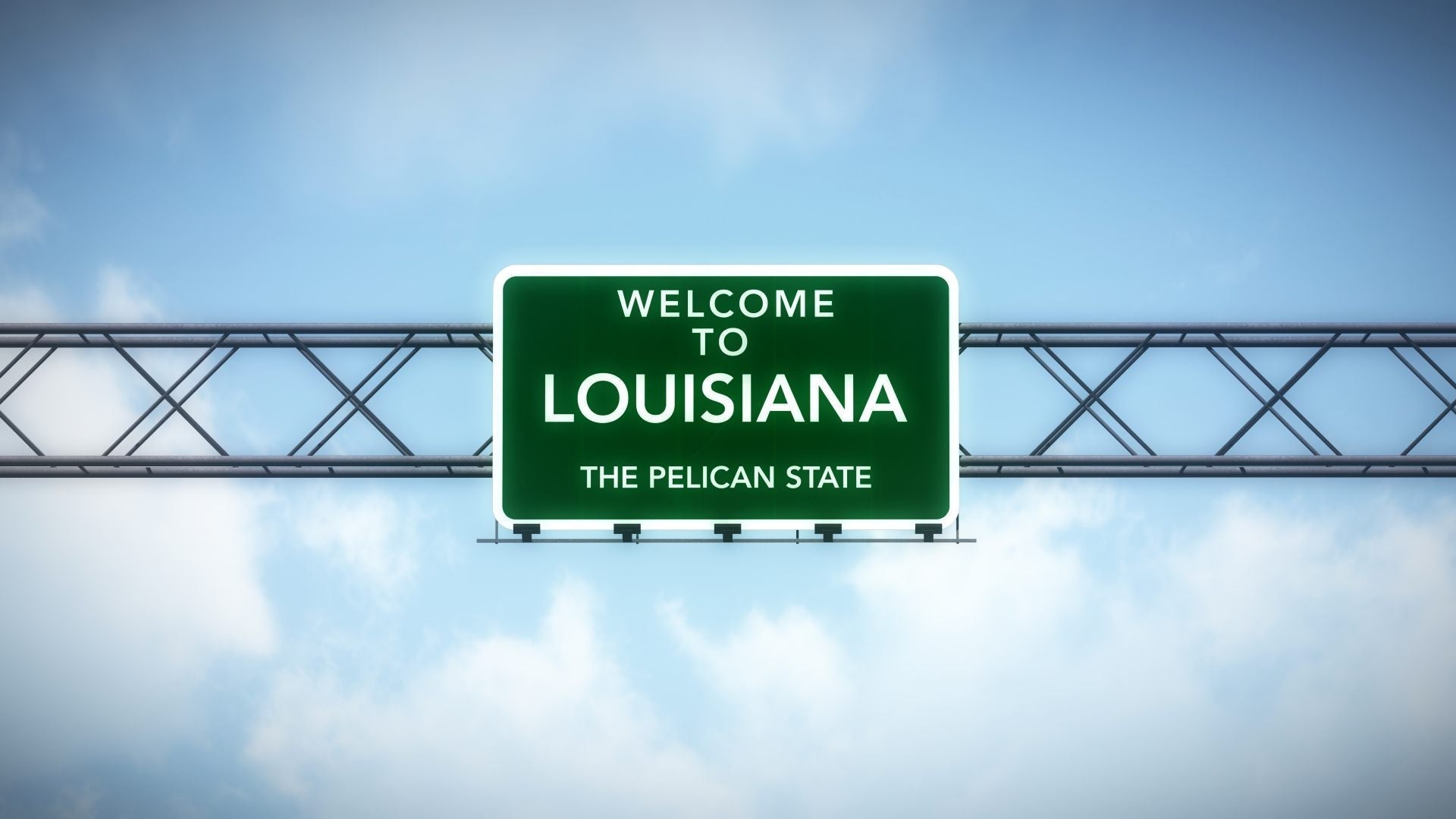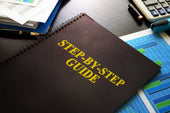Governor's Office of Homeland Security & Emergency Preparedness
 The Governor's Office of Homeland Security and Emergency Preparedness, simply called GOHSEP, plays a significant role in planning, training, and exercising to ensure Louisiana citizens are prepared to respond to and recover from emergencies.
The Governor's Office of Homeland Security and Emergency Preparedness, simply called GOHSEP, plays a significant role in planning, training, and exercising to ensure Louisiana citizens are prepared to respond to and recover from emergencies.
They work closely with local, State, Tribal, and Federal authorities, private-sector partners, and private nonprofits (PNPs) to prepare for, prevent, respond to, recover from, and mitigate against future emergencies and disasters.
As such, Local and State planning before an emergency event or disaster is a State and Federal requirement. With the help of GOHSEP, the provisions of plan review + coordination + technical assistance are made easier.
GOHSEP, or the agency responsible for emergency preparedness and homeland security, is independent under the governor's office. The agency is governed under R.S. 29:721 et seq., the Louisiana Homeland Security and Emergency Assistance and Disaster Act.
GOHSEP gives administration and support to reduce the death toll and property losses to the residents of the State through an all-hazards emergency management program of prevention, mitigation, preparedness, response, and recovery.
As such, each State's sixty-four (64) parishes has an emergency management program. Louisiana is divided into nine emergency management and homeland security planning districts, which GOHSEP uses related to its Regional Support Program.
The guide beneath shows every one of the nine areas:
Region 1: Orleans, St. Bernard, Plaquemines, and Jefferson Parishes
Region 2: East Baton Rouge, West Baton Rouge, Livingston, Ascension, Iberville, Pointe Coupee, East Feliciana, and West Feliciana Parishes
Region 3: Lafourche, St. John, St. Charles, St. James, Assumption, and Terrebonne Parishes
Region 4: Lafayette, Evangeline, St. Landry, Acadia, St. Martin, Iberia, Vermilion, and St. Mary Parishes
Region 5: Beauregard, Allen, Calcasieu, Jefferson Davis, and Cameron Parishes
Region 6: Vernon, Sabine, Natchitoches, Winn, Grant, Rapides, LaSalle, Catahoula, Concordia and Avoyelles Parishes
Region 7: Caddo, Bossier, Webster, Claiborne, Bienville, Red River, and DeSoto Parishes
Region 8: Ouachita, Union, Lincoln, Jackson, Caldwell, Richland, Morehouse, Franklin, West Carroll, East Carroll, Madison, and Tensas Parishes
Region 9: Washington, St. Tammany, St. Helena, and Tangipahoa Parishes
If you wish to learn more, visit the GOHSEP website at www.gohsep.la.gov.
GOHSEP in Louisiana - Who Are We?
Louisiana is a high-risk state for emergency events and disasters.
In addition to various tropical storms (or hurricanes), floods, high-wind events, and other natural disasters the state has faced, we also host critical supply routes and energy production resources that are attractive targets for man-made disruptions.
Through GOHSEP, the state protects communities, citizens, property, and resources during an emergency.
• We prepare emergency management professionals and community stakeholders through planning, training, and exercise to increase the State’s readiness.
• We work with local + State + Tribal + Federal law enforcement to prevent man-made emergencies or disasters.
• We coordinate with local + State + Tribal + other entities to manage local/State emergency response + recovery.
• We help local communities, State agencies, federally recognized Tribal authorities, and certain private nonprofits (PNPs) reduce risk through mitigation.
• We help local authorities identify + get, + keep Federal assistance through grant funding.
• We administer Federal grants + programs, helping to ensure Louisiana subgrant recipients comply with Federal requirements.
Parish Emergency Preparedness
Every Parish in the State has an Office of Homeland Security and Emergency Preparedness or Emergency Operations Center responsible for the area's homeland security and emergency preparedness.
Parish Emergency Advisory Committee
Every Parish in the State should bring a parish emergency advisory committee to guide the area or police jury president on country security and emergency management issues.
As such, the area or police jury president may consider the guidance and insight from the panel on such matters as planning, development, prioritization, coordination, and implementation of homeland security and emergency management issues to incorporate, however, not be restricted to country security and emergency mitigation, preparedness, response and recovery, grant requests, and the expenditure of grant funds.
GOHSEP'S MISSION AND FOCUS
 Mission
Mission
To lead and support Louisiana and its citizens in preparation for, response to, and recovery from all emergencies and disasters.
Five (5) Focus Areas
Listed below is GOHSEP's main focus, as presented in the brochure:
-
Prepare
GOHSEP develops Emergency Operations Plans (EOPs) with local and State partners. Staff also serve emergency management support to numerous State partners such as the Governor’s Advisory Council on Disability Affairs, State 211 Coordinating Council, Louisiana Business Emergency Operations Center (LA BEOC), and the State Legislature.
TRAINING + EXERCISE
GOHSEP provides all-hazards training + exercise at NO COST to responders through the U.S. Department of Homeland Security (DHS)/Federal Emergency Management Agency (FEMA). GOHSEP coordinates multiple regional and statewide exercises yearly under Homeland Security Exercise and Evaluation Program (HSEEP) guidelines.
LOGISTICS
GOHSEP’s Unified Logistics Element (ULE) validates Parish logistical compliance with FEMA guidance to ensure the availability of prepositioned commodity inventories, in-state stocks of commodities, and staging areas when needed.
LWIN
Louisiana Wireless Information Network (LWIN) is the largest statewide radio system in the country. It provides daily voice communications to over 73,073 first responders and key decision-makers from local, State, Federal, and other entities. GOHSEP leads and coordinates LWIN and chairs the Statewide Interoperability Executive Committee (SIEC), which oversees it.
GRANT OPPORTUNITIES
GOHSEP administers various Federal preparedness grant programs for first responders and emergency managers.
LA BEACH
GOHSEP and the LA BEOC work with businesses and industries to improve preparedness and communications before, during, and after an emergency or disaster.
-
Prevent
LA-SAFE
Proactive intelligence efforts are the key to inhibiting criminal activities and networks. The Louisiana State Analytical + Fusion Exchange (LA-SAFE or Fusion Center) is a central point within the State to identify threats, prevent acts of terrorism, and promote deterrence.
LA-SAFE and its Cyber Fusion Unit (CFU) are collaborative efforts that lawfully gather, analyze and disseminate information. They provide resources and expertise to maximize the State’s abilities to detect, prevent, investigate, and respond to threats.
Teams of local, State, and Federal law enforcement officials—within a framework of all crimes/hazards—promote interoperability, provide situational awareness, and disseminate information important to making informed decisions regarding suspicious activities. GOHSEP is one of its original partners. GOHSEP’s Cyber Security Officer(CSO) is a member of the Federal Bureau of Investigation’s (FBI) Cyber Task Force (CTF). Through the CTF, GOHSEP assists the FBI with Louisiana-based cyber intrusion cases.
Important Note: The Louisiana State Police (LSP) administer LA-SAFE's day-to-day operations. The Governor appoints the Director of GOHSEP as the State’s Homeland Security Advisor (HSA), who acts on behalf of the Governor in managing LA-SAFE.
GOHSEP’s role is to:
• Lead + manage + coordinate local and State response actions during an emergency or disaster.
• Activate + coordinate the State Emergency Operations Center (SEOC).
• Coordinate State + Federal Emergency Support Functions (ESFs).
• Manage + respond to requests from local + State + Tribal authorities + other entities for needed resources.
-
Respond
LOUISIANA SEOC
• State-of-the-art command + control center.
• Serves as central operations for emergency response + provides support for local
governments + other State agencies.
• Assists + coordinates:
>> All actions during an incident.
>> Requests for resources when local capacities have been exceeded.
ALERT FM + IPAWS
ALERT FM is an emergency notification system that delivers messages from local and State officials to citizens + schools + businesses + first responders using the radio data system of local F.M. radio stations. Messages are transported from a secure web-based portal to a satellite delivery system. Alerts are received on ALERT FM receivers or the ALERT FM cell phone app.
Moreover, the Integrated Public Alert and Warning System (IPAWS) provides officials with an integrated gateway to send alert + warning messages to the public using the Emergency Alert System (EAS), Wireless Emergency Alert (WEA), National Oceanic and Atmospheric Administration (NOAA) Weather Radio (NWR) and other alerting systems, all from a single interface.
WebEOC®
WebEOC® is GOHSEP’s secure Internet-based emergency information management application. It provides operational details of an imminent threat and is the state’s official emergency management software.
Moreover, WebEOC® is used by all 64 Parishes, State agencies, FEMA, and nongovernmental organization (NGO) partners to report and share information and is where local governments request emergency assistance.
IMAC + EMAC
GOHSEP provides guidelines and procedures for developing Parish Intrastate Mutual Aid Compacts (IMACs). It also coordinates State requests and responses to Emergency Management Assistance Compacts (EMACs) that enable states to share resources during an emergency or disaster response.
Virtual LA
Managed + administered by GOHSEP, Virtual Louisiana (Virtual LA) provides the State with a common operational picture for day-to-day planning and emergency response.
-
Recover
Recovery requires resources. GOHSEP helps Louisiana Subgrantees request + manage recovery resources.
GRANT RESOURCES
While not all emergency events or disasters rise to the level of a Federal declaration, a Presidential declaration opens the door for Federal assistance through:
• Public Assistance (P.A.) grants
• Hazard Mitigation Grant Program (HMGP)
• Individual Assistance (I.A.) grants
P.A. and Hazard Mitigation (H.M.) recovery grants are subgrants to local, State, and federally recognized Tribal entities and private nonprofits (PNPs) through GOHSEP. GOHSEP administers those subgrants in a highly regulated environment, helping to ensure compliance with complex and sometimes confusing Federal grant requirements to protect against the de-obligation of funds.
GOHSEP manages ten open Presidentially declared disasters, representing more than $15 billion in recovery assistance (P.A. + H.M.) authorized under the Robert T. Stafford Disaster Relief and Emergency Assistance Act (Stafford Act) for Louisiana citizens.
GRANT CYCLE
GOHSEP is organized to help Subgrantees comply with all Stafford Act recovery assistance for which they are eligible. GOHSEP works with disaster-impacted communities to:
• Identify eligible damages.
• Apply for FEMA recovery assistance through both the P.A. + H.M. programs.
• Formulate + implement + closeout eligible recovery projects.
LAPA
The GOHSEP-operated Louisiana Public Assistance (LAPA) web platform provides online grants management assistance for P.A. Subgrantees. The system handles more than 78,500 Project Worksheets (P.W.s) and amendments from application through closeout.
STATEWIDE IMPACT
Through recovery activities, education and outreach initiatives, and grants management assistance to areas impacted by emergency events or disasters, GOHSEP touches every Parish in the State.
Mitigate
BUILDING/REBUILDING STRONGER + SAFER COMMUNITIES
Hazard mitigation (H.M.) strategies help us build safer + stronger + smarter + more resilient communities. GOHSEP creates + maintains the State Hazard Mitigation Plan (SHMP); provides leadership, technical assistance, and oversight to local governments in the preparation of local H.M. plans; and oversees and administers Federal grant funding to local, State, and Federally recognized Tribal entities through Hazard Mitigation Assistance (HMA) programs.
GOHSEP's Declaration of State of Emergency
 State Emergency Declaration
State Emergency Declaration
A disaster or emergency, or both, should be pronounced by executive order or proclamation of the governor if he finds a disaster or emergency has happened, or the danger thereof is up and coming.
The calamity or crisis should continue until the lead representative determines that the danger of risk has passed or the disaster or crisis has been managed so that the crisis conditions never again exist. Then, the lead representative ends the calamity or emergency by executive order or proclamation. However, no calamity or crisis might continue for more than thirty days unless reestablished by the lead representative.
Moreover, the legislature may terminate a state of disaster or emergency at any time by a petition signed by a majority of the surviving members of either house.
Unified Command
GOHSEP works under the Unified Command structure during activation for all major calamities.
Unified Command is a collaboration interaction that permits all organizations with an obligation to respond to an incident, whether geological or functional, to develop a typical arrangement of occurrence targets and systems.
This is achieved without losing or resigning office authority, obligation, or responsibility. The lead representative fills in as the Unified Commander.
WebEOC
The WebEOC is an electronic information management system that provides a single access point for collecting and disseminating crisis or occasion-related data.
All resource requests should be input into the WebEOC through every parishes' Office of Homeland Security and Emergency Preparedness or Emergency Operations Center during a declared emergency or event. The solicitation will then be directed to the respective state or bureaucratic administrative entity to provide the resources as requested.
As such, this system permits GOHSEP to follow all requests and assets to guarantee that all needs are being met locally and for reimbursement from the federal government.
GOHSEP's Financing Approach
 Disaster and Emergency Funding Board
Disaster and Emergency Funding Board
The disaster and emergency funding board comprises the Senate president, the House of Representatives speaker, the House Appropriations Committee chairmen, and the Senate Finance Committee.
As such, the governor, with the concurrence of the disaster and emergency funding board, may make funds accessible by moving and exhausting monies appropriated for different purposes or may get for a term not to exceed a long time from the U.S. government or some other public or private source for reasons of adapting to a specific calamity.
State Disaster or Emergency Relief Fund
The Governer's Office of Homeland Security and Emergency Preparedness manages the State Disaster or Emergency Relief Fund. The sources of monies deposited in the asset will become funds from explicit official appointments and donations, gifts, awards, and coordinating or different assets given by regional or locally legislating governments.
The funds in the asset should be used for declared disasters, emergencies, or both. This includes using them as a state match requirement for installing cases submitted and endorsed by the Federal Emergency Management Agency.
Grants Assistance Programs
Through the Department of Homeland Security (DHS), the Governor's Office of Homeland Security and Emergency Preparedness (GOHSEP) offers annual Homeland Security grants to state and local first responders within Louisiana. GOHSEP will act as the State Administrative Agent (SAA) for federal homeland security grants and as the primary liaison with DHS and its Office of Grants and Training (G&T).
The qualified classifications for most grants involve administration and organization, preparation, training, planning, and equipment.
Louisiana's spotlight has been on improving the capacities of state and local first responders to prevent and respond to Chemical, Biological, Radiological, Nuclear, and Explosive (CBRNE) incidents, as detailed in the State Homeland Security Strategy.
GOHSEP's Course Objectives
 As depicted above, GOHSEP's objective of enhancing resource management, employing advanced applications, and assuming a supervisory role in expanding incidents is one way to mitigate risks and execute a well-done initial response.
As depicted above, GOHSEP's objective of enhancing resource management, employing advanced applications, and assuming a supervisory role in expanding incidents is one way to mitigate risks and execute a well-done initial response.
Thus, GOHSEP better allows responders to set an emergency protocol, utilize safety resources, and ultimately save a life.






















































